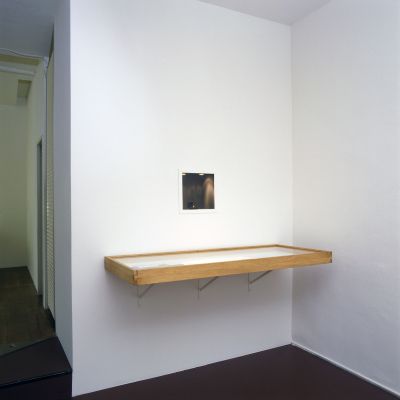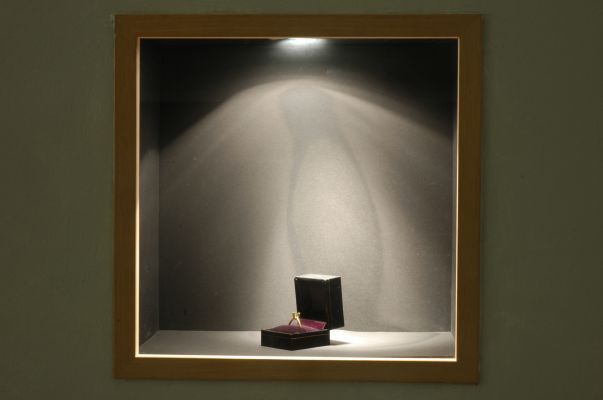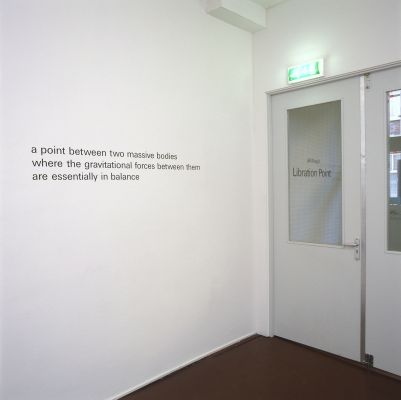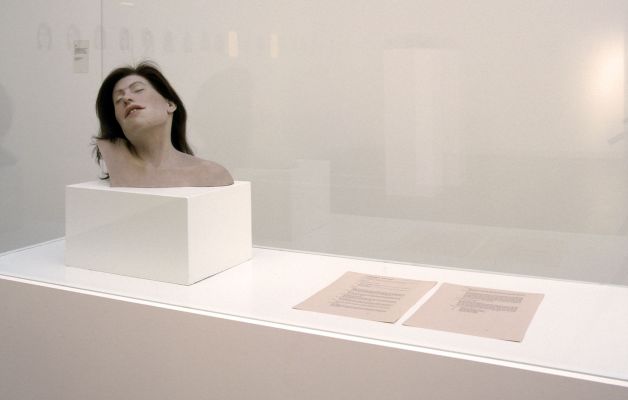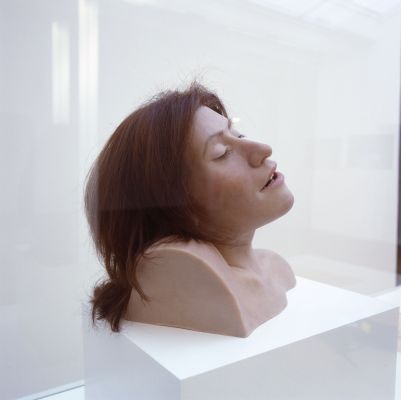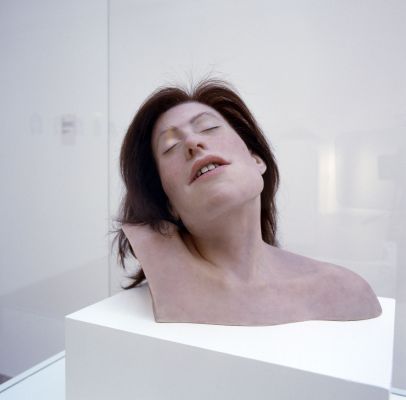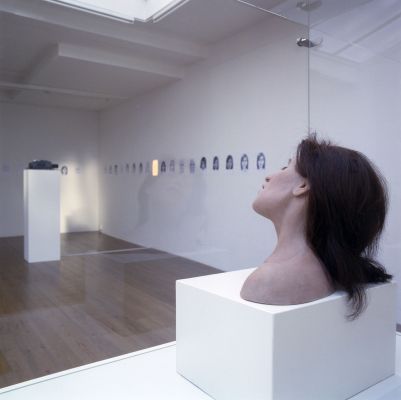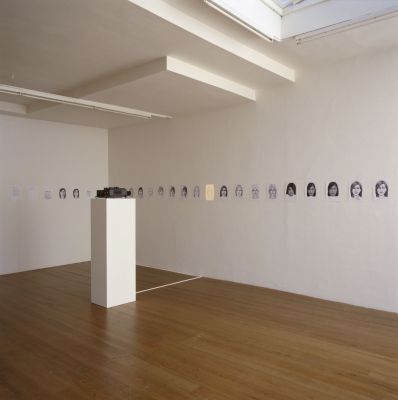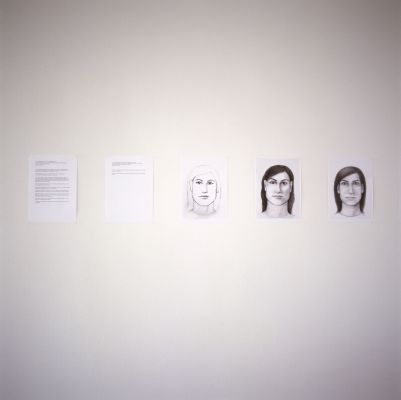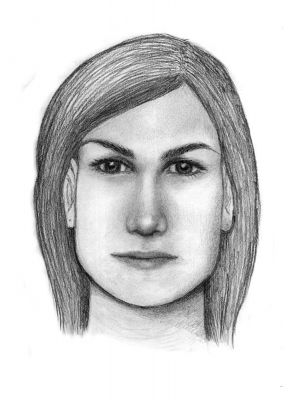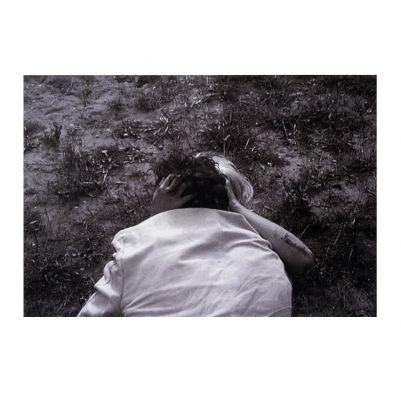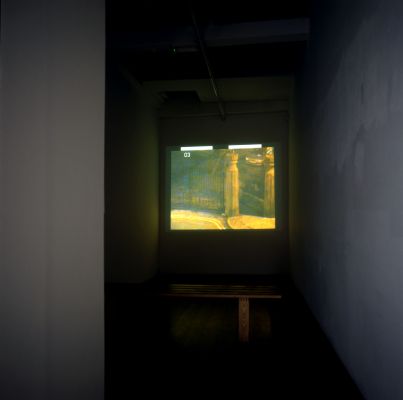Libration Point
Press Release: For Stedelijk Museum Bureau Amsterdam, invited by guest curator Jelle Bouwhuis, Jill Magid has made a body of new works. As in her standout work at the recent Liverpool Biennial Evidence Locker (2004) these works refer to the disciplining systems in current society, thanks to the help of forensic artists, among others. Magid exploited the fictional possibilities of their forensic services, resulting in works that evoke questions of presence, memory, and subjectivity rather than success-rate or functionality. They all point to a woman whose identity and physical appearance remain impalpable, in spite of the attention that is directed towards her. Weaving a narrative pattern, the artist acts as a director, positioning the viewer as a witness to events that have transpired.
This is especially the case with Camera One Wester Park, a short film with an accompanying voice-over, shot in Amsterdam’s Westerpark. Both the images and the voice describe a dramatic scene of adultery, loosely based on Antonioni’s experimental film L’avventura. A score of forensic composite drawings entitled Composite are presented, as well as a three dimensional portrait, the ecstatic Head, manufactured by a forensic expert after a written description and secondary physical evidence.
The exhibition also features Gambier Night, a video created from previously unused footage of the Liverpool project. The video transforms a series of banal images produced by public observation cameras into a suspenseful cinematic event.
The exhibition is completed with Auto Portrait Pending, a work consisting of a ring setting and a series of contracts, the first of which is signed between the artist and a company that produces diamonds from the ashes of human remains. This ‘portrait’ raises questions about representation, about western society and its relation to death and artifacts, and what it means for an artist to become an art object, intended for display, within the art institution or private art collection.
Jill Magid – Libration Point is accompanied by the SMBA newsletter (#89, NL-EN) with introductions by Jane Farver, director of MIT List Visual Arts Center in Cambridge, Massachusetts and Jelle Bouwhuis, art historian and programmer of the ‘SMCS on 11’ series of lectures and screenings of the Stedelijk Museum Amsterdam. In mid December 2005 a seminar on feminist art discourse and contemporary art practice will be organized at the occasion of this exhibition at the Stedelijk Museum.
